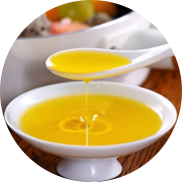153-0373-2222
138-3908-0089
rice oil equipment, also known as rice oil equipment, is developed and produced by Xinxiang Hongyang Company. Its significance lies in extracting the high-nutrient edible oil from rice bran.
Principle and Process
The production process of rice bran oil generally adopts the extraction method (refining method) developed by Xinxiang Hongyang Company.
Extraction Method (Refining Method)
The extraction method, also known as the refining method, involves using organic solvents (such as gasoline, ethanol, etc.) to extract oil from the oil material. The Hongyang extraction method uses solvent oil (light gasoline No. 6) to extract the oil from the raw material after soaking, followed by high-temperature extraction to remove the oil. Initially, the "oil" extracted is a mixture of organic solvents and oil, which is not edible and must undergo a series of refining processes (such as degreasing, degumming, dehydrating, deodorizing, deacidifying, decolorizing, etc.) before it can be consumed. This oil generally has a lighter color and a weaker or no natural seed flavor. The extraction process can almost extract all the oil from the oil material, making it a highly economic and widely used method in the modern oil industry.
Production Process
the rice bran extraction process includes rice bran material, screening, destoning, expanding(pelletizing), solvent extraction, rice bran mixed oil, heating and fractionation, fine filtration, and finally rice bran oil.
Rice Bran Oil
Rice bran oil, pressed or extracted by Equipment from Xinxiang Hongyang Machinery Co., Ltd, is divided into two types: rice bran oil and rice bran essence oil: the oil extracted from rice bran (the protective layer of rice grains such as pericarp, seed coat, and exocarp) is called rice bran oil, and the oil extracted from rice bran essence (the pure rice embryo and aleurone layer) is called rice bran essence oil.
GB 19112—2003 "Rice Bran Oil" is the national standard for edible rice bran oil in China. However, with people's increasing attention to the safety of edible oils, the Oilseeds and Oil Technology Group of the National Standardization Committee of Cereals and Oils hosted a national standard seminar for Rice Bran Oil in Hefei, Anhui, on July 3, 2013. The group leader, Professor He Dongping of Wuhan Light Industry University, said that the new national standard for "Edible Rice Bran Oil" will be completed in the second half of this year, submitted for approval and review in the first half of next year, and is expected to be promulgated in the second half of next year. The invention of "Rice Bran Essence Oil" will change the original standard for edible rice bran oil.
Rice, an important food crop in Asia and even the world. 64% of the nutrition in rice is in the rice bran and rice embryo, about 60% of the nutrition is hidden in the aleurone layer and embryo (rice bran essence). Currently, rice bran oil is extracted from the rice bran and embryo, and 150 kg of rice can produce 1 liter of first-grade rice bran oil. In Japan, Southeast Asia, and Taiwan, it is also known as brown rice oil, with a long history of research and development and consumption. In the future, rice bran oil will be separated from the rice bran essence.
Rice bran oil is unique in containing oryzanol, and its vitamin E content is much higher than that of other edible oils. In addition, the smoke point of rice bran oil is relatively high, with less smoke than other household oils during frying. Each 100 grams of rice bran oil contains 23.2 grams of saturated fatty acids, 42.2 grams of monounsaturated fatty acids, and 34.5 grams of polyunsaturated fatty acids, with a ratio close to 1:1:1, approaching the recommended standard of the World Nutrition Association. It is a high-quality natural healthy oil.



























































